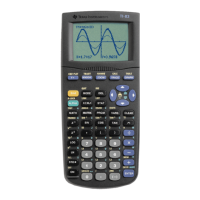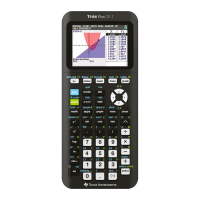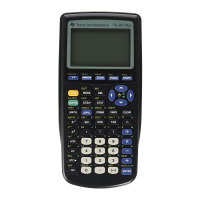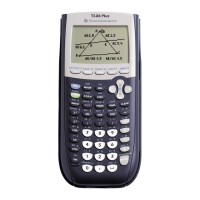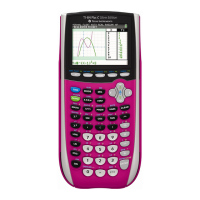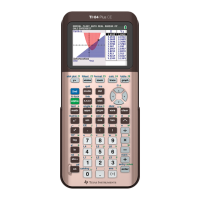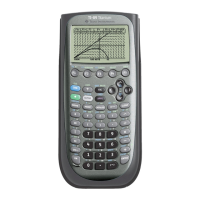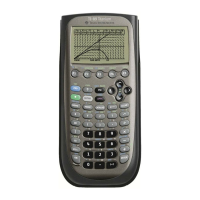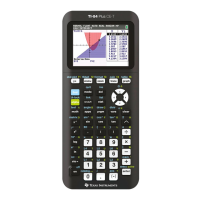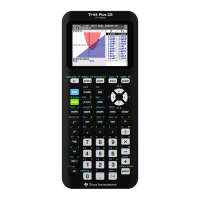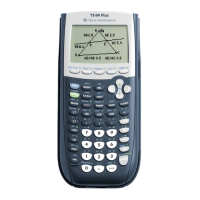Math, Angle, and Test Operations 2.3
82STAT~4.DOC TI-83 international English Bob Fedorisko Revised: 10/28/05 12:19 PM Printed: 10/28/05 12:20
PM Page 3 of 26
Math operations that are valid for lists return a list calculated
element by element. If you use two lists in the same expression,
they must be the same length.
You can use + (addition, Ã), N (subtraction, ¹), ä
ää
ä
(multiplication, ¯), and à (division, ¥) with real and complex
numbers, expressions, lists, and matrices. You cannot use
à with
matrices.
valueA
+valueB valueA N valueB
valueA
ä
ää
ävalueB valueA à valueB
You can use the trigonometric (trig) functions (sine, ˜;
cosine, ™; and tangent, š) with real numbers, expressions,
and lists. The current angle mode setting affects interpretation.
For example,
sin(30) in Radian mode returns L.9880316241; in
Degree mode it returns .5.
sin(value) cos(value) tan(value)
You can use the inverse trig functions (arcsine, y [SIN
L1
];
arccosine, y [
COS
L1
]; and arctangent, y [TAN
L1
]) with real
numbers, expressions, and lists. The current angle mode setting
affects interpretation.
sin
L1
(value) cos
L1
(value) tan
L1
(value)
Note: The trig functions do not operate on complex numbers.
You can use ^ (power, ›),
2
(square, ¡), and ‡( (square root,
y [
‡]) with real and complex numbers, expressions, lists, and
matrices. You cannot use
‡( with matrices.
value
^power value
2
‡(value)
You can use
L1
(inverse, —) with real and complex numbers,
expressions, lists, and matrices. The multiplicative inverse is
equivalent to the reciprocal, 1àx.
value
L1
Keyboard Math Operations
Using Lists with
Math Operations
+ (Addition),
N (Subtraction),
ä
ää
ä (Multiplication),
à (Division)
Trigonometric
Functions
^ (Power),
2
(Square),
‡( (Square Root)
L
1
(Inverse)
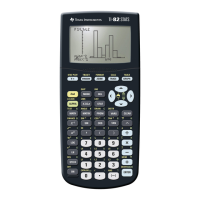
